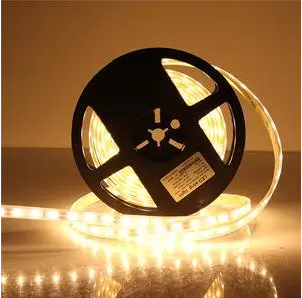The installation of LED strip lighting can bring a whole new atmosphere to any space whether it is for ambiance purposes or to create tasking space. By turning to a wholesaler for your LED strip lights, you can enjoy lower costs...however the installation itself is only suitable if you have plenty of experience with such products.... With step-by-step details showing you how the pros do it
Choosing the Right LED Strip
Start from the required brightness for your project in lumens per foot. 150 to 250 lumens per foot is usually good enough for accent lighting, but task-style lighting needs at least 450 lumens and up. Color temperature can range from warm (2700K) to cool daylight (6500K), depending on whether you want something that will make the atmosphere more intimate or lively.
Preparation for the Installation Surface
The surface where an LED strip sticks has a big impact on how long it will function. Keep the area to which you apply it smooth, free of dirt and moisture. So, wipe everything down to make sure there is no dust or oil preventing your adhesive backing from sticking in place. For kitchens and bathrooms, you may want to apply a primer for better adhesion.
Step Four: Trimming the Slits
Most will be able to be cut at marked intervals, which are typically every 1"-2" or so on most models for RGB LED strips. Cut along the line in one swift go - use a good, sharp pair of scissors and make sure to trim straight across. You may need to solder of connect sections with connectors if your project needs more than one strip. Loose connections could possibly result in a voltage drop and unequal lighting.
Applying the LED Strips
Simply peel off the strip from its backing, and apply it onto your panel in a way so that Bill Collin's image is right side up. Begin at one end of the spine or cover and move to other guaranteeing that there are no wrinkles floss regions. LED strips can either be gently bent around corners or cut and reconnected using bendable corner connectors.

Powering the LED Strips
Wattage and Total Length of an LED Strip - The wattage can refer to warm white, cool white or RGB LED strips. A properly sized power supply is critical. Underpowering is the #1 mistake - this can result in dim lights or even overheating. Take the watt per foot and multiply that by total length of the LED strip to get your overall Wattage then go up 20% in power supply.
Adding Controls and Dimmers
You can install a dimmer or a controller for more functionality. This is what you use to control the brightness (or darken it) of LEDs strips, and possibly with a color or even full-color temperature. Bluetooth or Wi-Fi connected wireless controllers have become a popular choice for many due to their easy syncing and extension with smart home systems.
Testing Your Installation
Be sure to test all parts of your LED strip lights before committing the installation. Look for dark areas or flickering that imply a bad connection or faulty strip.
How To Maintain Your LED Strips Expert Tips for Maintenance Over time, you should clean the dust off of your LED strips to prevent flying on a regular basis and overheating. For good measure, be sure to check and re-attach the adhesive periodically everytime temperature fluctuation is involved.
So, by following these detailed steps you can make sure your led strip lights wholesale of installation is properly done and it provides a professional touch to the finishing giving life to any space. Being skilled in the installation of LED strip lights is a great asset whether you are undertaking simple home decorations or complex scenarios where an understanding of joins and connections can provide good utility value.
